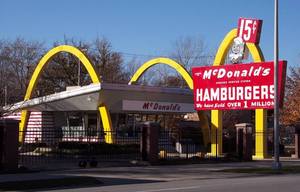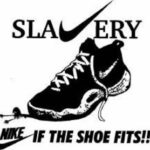Organization and the Organization Man
During the 1950s, businesses expanded rapidly. By the 1956, the majority of Americans no longer held blue collar, or industrial jobs. Instead, more people worked in higher paid, white collar potions – clerical, managerial, or professional occupation. Unlike blue collar workers, who manufactured goods for sale, white collar workers tended to perform services in fields like sales, advertising, insurance, and communications. Many white collar workers performed their services in large corporations or government agencies. Some of these corporations continued expanding by forming conglomerates. (A conglomerate is a major corporation that includes a number of smaller companies in unrelated industries.) For example, on conglomerate, International Telephone and Telegraph (ITT), whose original business was communications, bought car rental companies, insurance companies, and hotel and motel chains. Through this diversification, or investment in various areas of the economy, ITT tried to protect itself from declines in individual industries. Other huge parent companies included American Telephone and Telegraph, Xerox, and General Electric.
In addition to diversifying, another strategy for business expansion – franchising developed at this time. A franchise is a company that offers similar products or services in many locations. (Franchise is also used to refer to the right, sold to an individual, to do business using the parent company’s name and the system that the parent company developed.) Fast food restaurants developed some of the first and most successful franchises. McDonald’s, for example had its start when the McDonald brothers developed unusually efficient service, based on assembly line methods, at their small drive in restaurant in San Bernardino, California. They simplified the menu featured 15 cent hamburgers, and mechanized their kitchen. Salesman Ray Kroc paid the McDonald’s $2.7 million for the franchise rights to their hamburger drive in. In April 1955, he opened his first McDonald’s in Des Plaines, Illinois, where he further improved the assembly line process and introduced the golden arches that are no familiar all over the world.
While franchises like McDonald’s helped standardize what people ate, some American workers found themselves becoming standardized as well. Employees who were well paid and held secure jobs in thriving companies sometimes paid a price for economic advancement: a loss of their individuality. In general, businesses did not want creative thinkers, rebels, or anyone who would rock the corporate boat. In The Organization, a book based on a classic 1956 study of suburban Park Forest, Illinois, and other communities, William H. Whyte described how the new, large organizations created “company people.” Companies would give personality tests to people applying for jobs to make sure they would “fit in” the corporate culture. Companies rewarded employees for teamwork, cooperation, and loyalty and so contributed to the growth of conformity, which Whyte called “belongingness.” Despite their success, a number of workers questioned whether pursuing the American dream exacted too high a price as conformity replaced individuality.
The Suburban Life Style
Though achieving job security did take a psychological toll on some Americans who resented having to repress their own personalities, it also enabled people to provide their families with eh so called good things in life. Most Americans worked in cities, but fewer and fewer of them lived there. New highways and the availability of automobiles and gasoline made commuting possible. By the early 1960s every large city in the United States was surrounded by suburbs. Of the 13 million new homes built in the 1950s, 85 percent were built in the suburbs. For many people, the suburbs embodied the American dream of an affordable single family house, good schools, and a safe, healthy environment for children, and congenial neighbors just like themselves.
Baby Boom
As soldiers returned from World War II and settled into family life, they contributed to an unprecedented population explosion known as the baby boom. During the late 1940s and throughout the early 1960s, the birth rate in the United Sates soared. At the height of the baby boom, in 1957, one American infant was born every seven seconds making a total of 4,308,000 that year. The result was the largest generation in the nation’s history. As the population in America soared, the expansion of businesses, and the move to a more suburbia home also had a major impact in the 1950s



